A trip to Vietnam is not complete without witnessing its rice field. As the world's third-largest rice exporter, the rice fields in Vietnam present a breathtaking variety of landscapes. From the seemingly endless flat plains to the terraced fields clinging to the northern mountains, and the flooded paddies of the Mekong Delta, each vista narrates the story of a people deeply connected to their land.
Which rice paddies in vietnam should you visit for the most unforgettable experiences? And when to visit the rice fields to witness them in their full glory, whether lush green or golden, depending on the season? This guide invites you to explore the most beautiful paddy field in Vietnam, from the mountainous north to the fluvial south, while helping you choose the ideal time to travel and craft an itinerary tailored to your desires.
1. The Vietnam rice field - An iconic image
"Is it really true that Vietnamese people eat rice three times a day, all year round?" travellers often ask, a mixture of surprise and amusement in their voices after spending a few days in Vietnam. Yes, here, rice is omnipresent for breakfast, lunch, and dinner.
Rice is an integral part of Vietnamese culture. It is cultivated, respected, offered in ceremonies, and celebrated through traditional festivals. Thanks to its abundant production, Vietnam has risen to become one of the top 3 global rice exporters. And it is precisely in its rice fields that this unique bond between the land and its people truly comes to life.
In the countryside, simply walking along a blossoming rice field is enough to awaken all the senses. A sweet and enveloping scent, unique to vietnam rice field, rises into the air. This fragrance, mingled with the breeze, seems to hold the very essence of the country. For those who grew up in the city, this aroma is a revelation, a return to their roots.
>> See more: The importance of rice in Vietnamese life
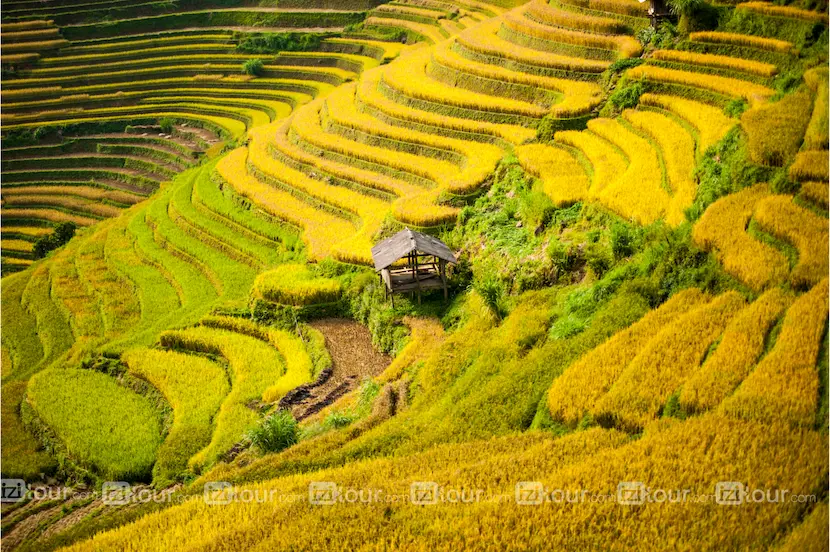
Rice paddies are not just landscapes; they are living symbols of rural Vietnam. Their beauty lies not in brilliance, but in subtlety. Like rice flowers, which do not seek to seduce or shine, but exude a gentle, humble fragrance and persist in silence. And when the ears of rice swell with grains, the stalks bow down silently - a perfect image of modesty, mirroring the Vietnamese farmers themselves. Discovering the rice fields becomes an essential activity during a trip to Vietnam. More than a natural site, they are an open door to the soul of a nation.
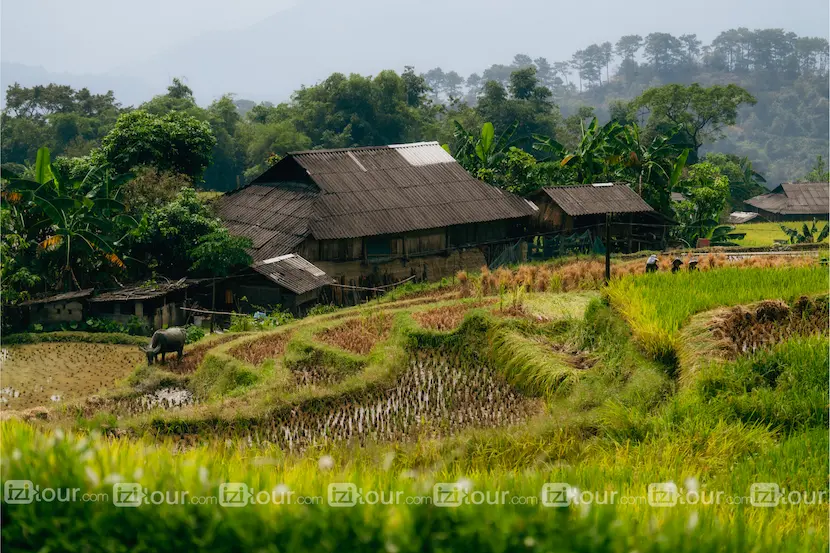
2. The most beautiful Vietnam rice fields to discover
From the mountainous north to the aquatic south, Vietnam abounds with rice fields of fascinating shapes and colours. These are the most iconic sites to include in your itinerary.
2.1. Rice terraces in Mu Cang Chai
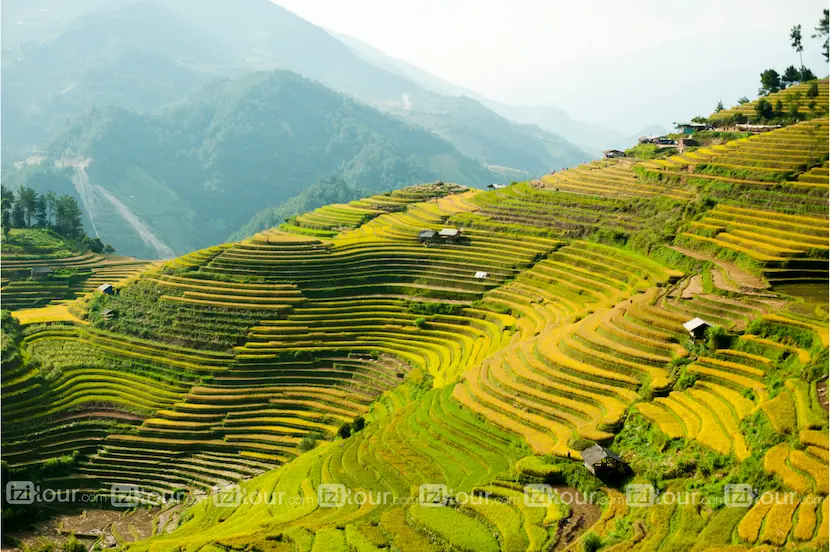
Located approximately 300 km from Hanoi, away from major tourist routes, Mu Cang Chai is often dubbed "paradise among the mountains". Renowned for possessing the largest system of rice terraces in Vietnam, and the second largest in the world after the Philippines, this region impresses with its raw beauty and spectacular nature. A true masterpiece of mountain agriculture, this site offers breathtaking landscapes and an immersion into the still-intact H'mong culture.
You will be able to find these most emblematic sites in Mu Cang Chai.
- Mam Xoi Hill (Doi Mam Xoi): This is the most famous rice hill in Mu Cang Chai, with its perfectly circular, spiralling rice terraces, shimmering with golden reflections during the harvest season. A symbol of the region, it's a must-see for photographers.
- De Xu Phinh: A hillside field stretching over 600 hectares, at an altitude of over 1,200 m. This site offers an open view of layered terraces that create a natural poetry, particularly calm and majestic.
- La Pan Tan: This village is known for its horseshoe-shaped rice terraces (Mong Ngua), highly prized by drone enthusiasts. It is also one of the key locations for the rice terraces festival held every autumn.
- Tu Le: Nestled in a verdant valley, this town is renowned not only for its peaceful rice fields but also for its traditional herbal baths and fragrant sticky rice, a local speciality.
- Cao Pha: The lush valley with intense green hues, surrounded by mountains and forests, perfect for reconnecting with nature.
2.2. Rice fields of Y Ty
Located at the extreme northwest of Lao Cai, Y Ty remains relatively unknown to classic tourist circuits. Perched at over 2,000 metres altitude, this village seems suspended between sky and earth. Here, the rice terraces stretch under a near-permanent veil of mist, creating a mystical and unreal atmosphere.
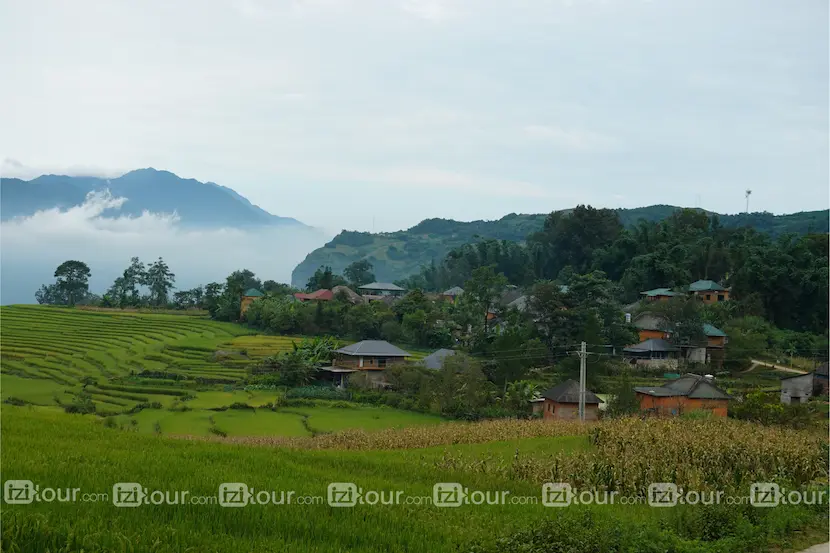
What distinguishes Y Ty from other sites is its raw nature and the absolute tranquility that reigns there. The rice fields, shaped by the Ha Nhi, Hmong, and Red Dao ethnic groups, unfold like green or golden ribbons depending on the season, winding between the rammed-earth houses, typical of Ha Nhi architecture.
Some iconic places to explore:
- The Pa Valley: The heart of Y Ty, where the rice fields wrap around traditional hamlets. A perfect place to capture the soft light of misty early mornings.
- Ngai Thau: The "roof" of Y Ty, at over 2,400 metres. Here, the rice fields meet the sea of clouds, creating a feeling of being alone in the world.
- A Lu: A wide, peaceful valley, dotted with harmonious rice fields and crossed by small streams. The reflection of the sky on the flooded fields is simply magical.
Y Ty is an invitation to calm, contemplation, and encountering a preserved mountain culture. Those who venture there always return transformed, their eyes and hearts filled with beauty.
2.3. Rice fields in Sapa
It's no coincidence that Sapa, nestled in the mountainous province of Lao Cai, is among Vietnam's most iconic destinations. At over 1,500 metres altitude, this small northern town offers a breathtaking natural tableau: misty mountains, deep valleys, floating seas of clouds... and above all, rice terraces of legendary beauty.
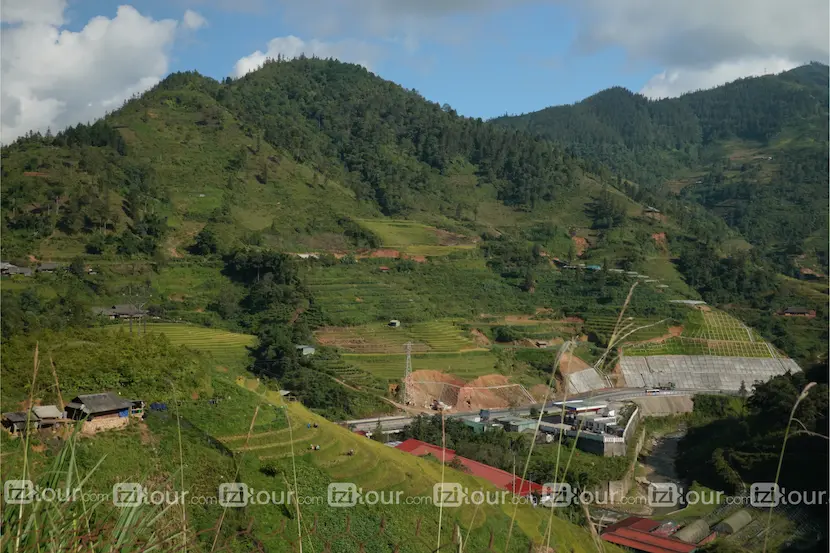
Ranked by Travel + Leisure in the top 7 most beautiful rice fields in Southeast Asia, those of Sapa are true living works of art. Patiently shaped by the Hmong and Dao ethnic groups, they draw harmonious curves on the steep slopes, testaments to a know-how passed down from generation to generation. Here, each terrace tells a story of labour, connection with nature, and ancestral balance.
For an immersive experience, don't miss the following villages in Sapa:
- Lao Chai: In the heart of the Muong Hoa valley, this Hmong village offers a spectacular view of the terraces cascading down to the riverbed. The atmosphere is serene, ideal for walking.
- Sin Chai: More isolated, this small hamlet captivates with its raw authenticity. The rice fields here are nestled at the foot of Mount Fansipan, and life unfolds at the rhythm of the seasons.
- Ta Phin: Famous for its Dao medicinal herb baths, Ta Phin also charms with its winding rice fields and traditional wooden houses, surrounded by verdant mountains.
- Ta Van: Very popular with hikers, this village harmoniously blends a bucolic landscape with warm hospitality. The rice terraces stretch as far as the eye can see, punctuated by stilt houses.
2.4. Rice fields of Hoang Su Phi

Located in the Northeastern Vietnam, Hoang Su Phi is a still-preserved destination, far from the tourist trails. Hoang Su Phi rice terraces are staggered across the steep mountains, creating spectacular landscapes in every season, from vibrant green in spring to golden hues in autumn.
Shaped for centuries by the hands of the La Chi, Dao, Nung, and Hmong ethnic groups, the rice fields of Hoang Su Phi tell a story of labour, respect for nature, and unique cultural identity. Hoang Su Phi is not just visited with the eyes, but also with the heart.
These are 5 rice terraces not-to-miss during your visit to Hoang Su Phi, Vietnam:
- Ban Phung: Known for its spectacular cascading rice fields that descend from the peaks to the valleys.
- Ban Luoc: Renowned for its vast terraced fields and impressive panoramic views.
- Nam Khoa: Appreciated for its peaceful atmosphere, ideal for recharging in the heart of nature.
- Nam Hong: Charming traditional hamlet nestled between hills and verdant rice fields.
- Thong Nguyen: A preferred starting point for hikes and cultural immersions in the surrounding villages.
2.5. Rice fields in Bac Son

Located approximately 160 km from Hanoi, the Bac Son valley is famous not only for its historical significance, marked by the Bac Son uprising, but also for its spectacular landscapes of endless rice fields. Surrounded by imposing mountains, this valley benefits from a cool climate and fertile land, perfect for rice cultivation. The best times to admire the rice fields of Bac Son are late July and mid-November, when the harvest arrives earlier than in other regions like Mu Cang Chai or Hoang Su Phi.
The rice fields of Bac Son, with their irregular fields alternating between green and gold, create a breathtaking landscape. Although they are not as famous as the terraces of Y Ty or Mu Cang Chai, they possess a unique charm that particularly attracts photographers. Thanks to the use of machinery for harvesting, the harvest season is short, lasting only a week. It is therefore important to check the harvest calendar before visiting.
Unlike the northwestern terraces, the rice fields of Bac Son are flat and vast, offering an impressive palette of colours, from the bright green of young shoots to the golden yellow of mature fields. If you are lucky, you can see these golden fields that resemble a carpet of rice under the sunlight.
Places not to miss in Bac Son:
- Bac Son Valley: A magnificent valley surrounded by limestone mountains, offering a splendid view of the extensive rice fields that blend with the surrounding natural landscapes.
- Ban Duoc: This village of the Tay ethnic group, with its traditional wooden stilt houses and endless rice fields, immerses you in an authentic and peaceful setting.
- Khuoi Ky: This picturesque village is an ideal place to observe the rice terraces, particularly impressive during the harvest.
- Van Linh: A small hamlet nestled between hills and rice fields, perfect for a leisurely walk and immersion in local culture.
- Thon Tam: A little-known but strikingly beautiful village, surrounded by rice fields and mountains, ideal for travellers seeking calm and authenticity.
2.6. Rice fields at Pu Luong
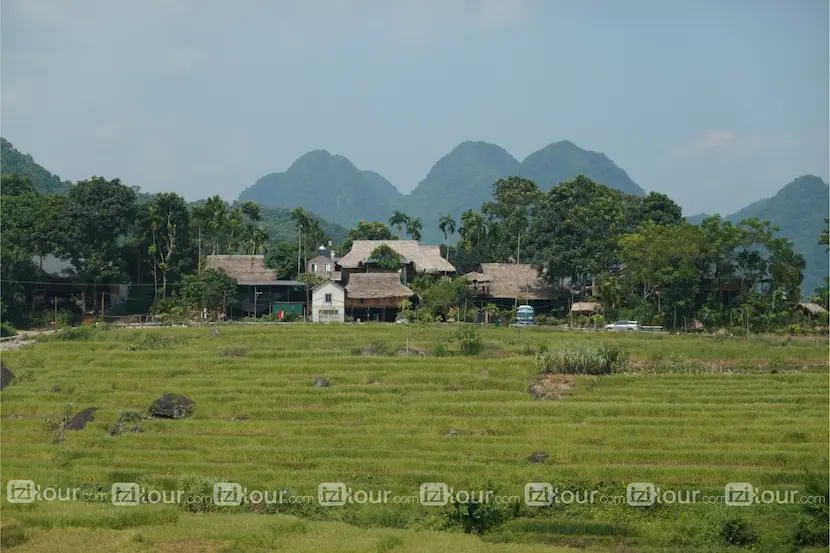
Located a short distance from Hanoi, the Pu Luong Nature Reserve offers a landscape of peaceful rice fields. Here, the rice fields meander between karst mountains, tropical forests, and stilt hamlets, forming a natural tableau of rare harmony.
Cultivated mainly by the Thai and Muong ethnic groups, the rice fields of Pu Luong follow the rhythm of nature and water. It is an ideal destination for lovers of hiking, authenticity, and silence.
- Ban Don: A central village in the reserve, renowned for its traditional wooden stilt houses, open landscapes, and the hospitality of its inhabitants.
- Ban Hieu: Famous for its natural waterfall and terraced fields bordering the hills, it is an ideal place for hiking and relaxing in an authentic setting.
- Kho Muong: An isolated valley in the heart of the jungle, perfect for travellers seeking adventure, wild nature, and absolute calm.
- Ban Son: A small, discreet hamlet surrounded by stepped rice fields and primary forests, highly appreciated for homestays.
- Ban Uoi: Crossed by hiking trails, this village offers a bucolic panorama typical of rural Pu Luong.
2.7. Rice fields in Mai Chau rice fields
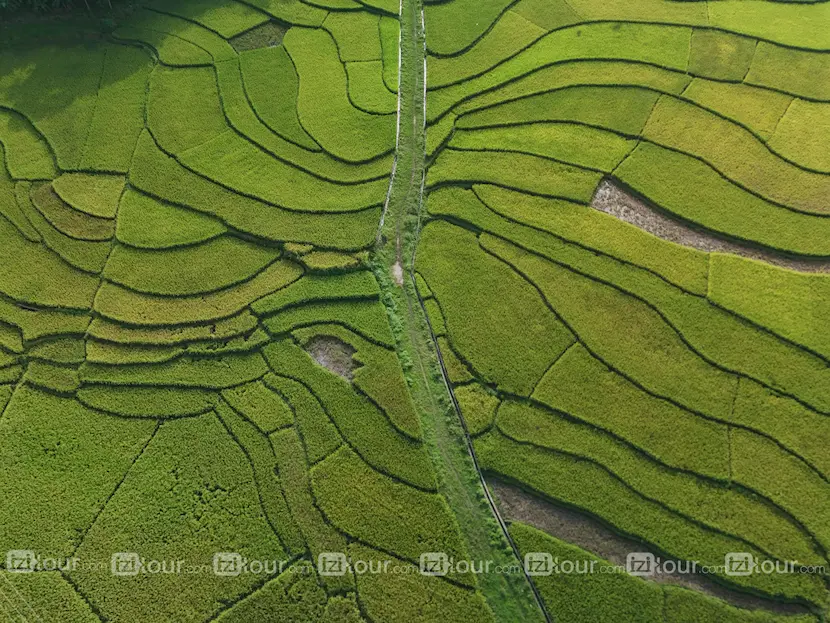
Located approximately 150 km southwest of Hanoi, in Hoa Binh province, the Mai Chau valley is a true green jewel, nestled between karst mountains. Renowned for its bucolic landscapes, traditional White Thai villages, and vast rice fields, Mai Chau offers a peaceful atmosphere, ideal for a nature getaway away from urban bustle.
The rice fields of Mai Chau display their changing hues with the seasons, from the vibrant green of spring to the golden yellow before harvest, painting a natural patchwork at the foot of traditional stilt houses. The serene beauty of these rice fields further enhances the rustic elegance of the Thai villages, giving Mai Chau a gentle and authentic charm.
Some iconic places to explore the rice fields of Mai Chau:
- Ban Lac and Pom Coong: These two traditional villages, located in the heart of the valley, offer direct access to the rice fields. Renting a bicycle to meander through the fields is one of the must-do activities. Here, scenes of daily life – farmers harvesting rice, children playing between the rows – unfold before your eyes in absolute tranquility.
- Mai Hich Valley: Less touristy than Mai Chau, the Mai Hich valley reveals a wilder and more intact nature. The rice fields here are bordered by verdant hills and crossed by clear streams, creating a perfect setting for photography enthusiasts and gentle hiking.
- Thung Khe Pass: Even before arriving in Mai Chau, a stop at the Thung Khe Pass allows you to admire the entire valley and its vast rice fields stretching as far as the eye can see from above. On a clear day, the panoramic view is absolutely breathtaking, especially during the golden hour of sunset.
2.8. Rice fields in Tam Coc, Ninh Binh
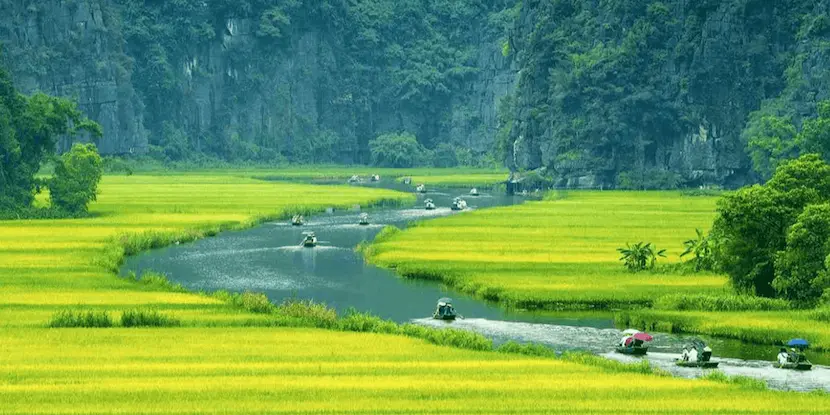
Located just 100 km south of Hanoi, Tam Coc is undoubtedly one of the most beautiful rice field landscapes in Vietnam. Nicknamed "Ha Long Bay on land", this exceptional site captivates with the harmony between majestic limestone mountains and verdant rice fields that stretch along the Ngo Dong River. Tam Coc offers a living tableau, changing with the seasons, where the tender green of new rice gives way to a brilliant golden yellow during the harvest period.
You will find the unmissable highlights for discovering the rice fields in Tam Coc, Ninh Binh.
- Boat trip on the Ngo Dong River: The iconic experience of Tam Coc is a ride in a traditional sampan, often rowed with their feet by skilled locals. This peaceful cruise passes through submerged rice fields and winds under three natural limestone caves (Hang Ca, Hang Hai, Hang Ba). Between May and June, when the rice fields reach maturity, the landscape is a magical patchwork of yellow and green, reflected in the calm waters.
- Hang Mua Viewpoint: For a spectacular panoramic view of the rice fields of Tam Coc, climbing the 500 steps to the summit of Mua Mountain is a must. From above, the Ngo Dong River meanders through the golden rice fields, framed by steep cliffs, creating a breathtaking natural spectacle.
2.9. Hoi An rice field
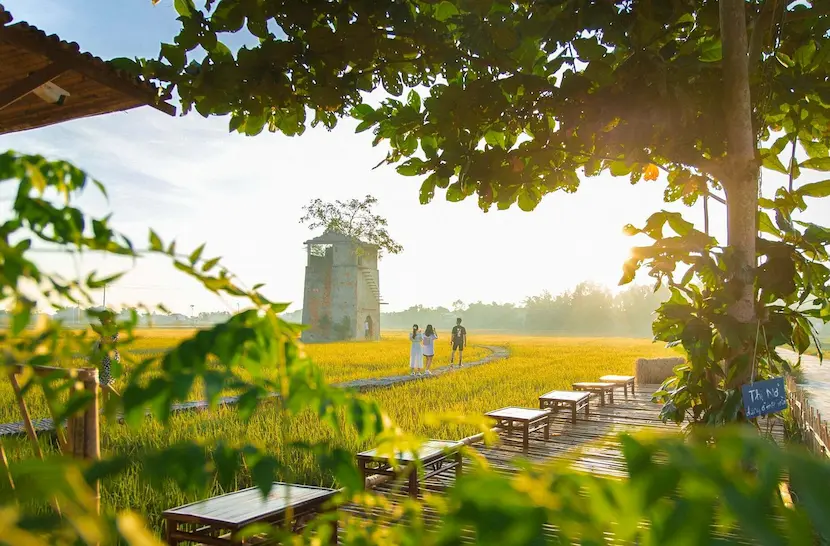
Known mainly for its UNESCO-listed ancient town and colourful lanterns, Hoi An also hides, in its surroundings, magnificent landscapes of peaceful rice fields, true havens of greenery. Far from the tourist bustle of the historical centre, the rice paddies in Hoi An offer a gentle immersion into the Vietnamese countryside, between ancestral agricultural traditions and authentic scenes of life. The quiet charm of the rice paddies further enhances the timeless and picturesque beauty of this World Heritage city.
Some unmissable places to admire the rice fields around Hoi An:
- Cam Thanh: Located just a few kilometres from the city centre, this village is famous for its landscapes of rice fields mixed with water coconut forests. By bicycle, you can cross the small paths lined with verdant rice fields, observe farmers at work, and even participate in traditional agricultural activities, such as rice planting or net fishing.
- Tra Que: This village is primarily known for its organic vegetable gardens, but by venturing a little further, you will discover vast expanses of rice fields, especially at the beginning of the wet season. It is an ideal place for a bike or walking tour at sunrise or sunset, when the light gilds the fields and magnifies the landscape.
- Cam Chau: On the road between Hoi An and Cua Dai beach, Cam Chau reveals common rural scenes: women in conical hats bent over rice seedlings, buffaloes grazing slowly in the fields, and the shimmering reflections of flooded rice paddies under the morning sun. Several cafes in Cam Chau offer delicious drinks and seating to take in the lush rice fields.
2.10. Mekong Delta rice fields
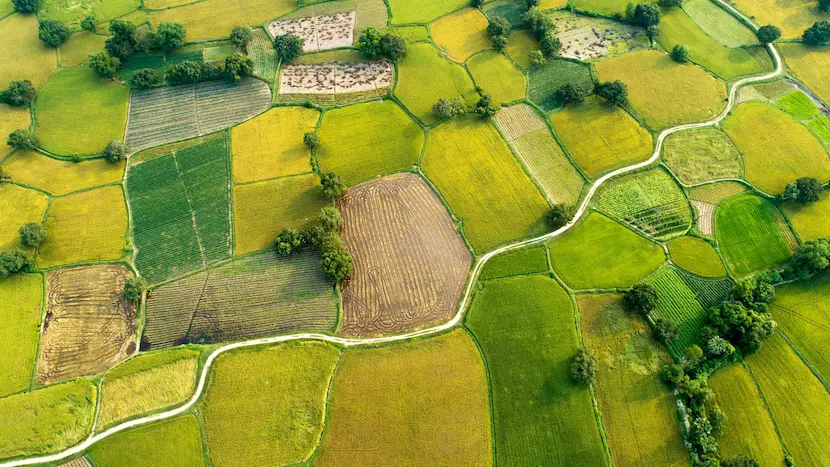
Located at the extreme south of Vietnam, the Mekong Delta is a vast plain formed by nine branches of the Mekong River before it flows into the East Sea. This region, one of the most fertile in Southeast Asia, is considered the cradle of Vietnamese rice cultivation.
In Mekong Delta, the rice fields stretch as far as the eye can see, flooded by seasonal floods that naturally regulate agricultural cycles. Unlike the rice terraces of the North, the fields of the delta are flat, wide, and waterlogged, bordered by coconut palms, mangroves, and crisscrossed by a dense network of canals. Rice cultivation here is intimately linked to aquatic life, tides, and the ingenuity of the inhabitants.
Beyond the landscapes, the delta is a place of remarkable cultural coexistence, where Vietnamese, Khmer, and Chinese traditions intersect. Not only rice is cultivated here, but also simplicity, generosity, and spirituality.
Some interesting places to explore:
- Can Tho: The true capital of the delta, famous for its floating markets (Cai Rang, Phong Dien), tropical orchards, and fertile rice fields along the Hau River.
- An Giang: Renowned for its spiritual landscapes (Sam Mountain, Khmer pagodas) and irrigated rice fields that extend to the Cambodian border.
- Tra Vinh: A symbol of harmonious coexistence between cultures, where Khmer pagodas, local markets, and rice fields stand side by side in a peaceful atmosphere.
- Dong Thap: A popular eco-tourism destination, with its protected wetlands, migratory birds, and rice fields bathed in golden light at the end of the day.
- Soc Trang: Known for its colourful traditional festivals, cuisine rich in Khmer influences, and rice fields bordered by peaceful canals.
3. Best time to see rice fields in Vietnam?
When is the best time to visit the rice fields in Vietnam? In reality, you can discover Vietnam's rice fields throughout the year, as each season possesses its own magic. The best time depends primarily on what you want to experience and feel: the freshness of young shoots, the golden splendour of the harvest, or the poetry of shimmering waterlogged fields.
Thanks to its tropical monsoon climate and its elongated geography from north to south, Vietnam enjoys ideal conditions for rice cultivation, with 2 to 3 crops per year depending on the region. This means that at any time of the year, somewhere in the country, you will find rice fields at their peak.
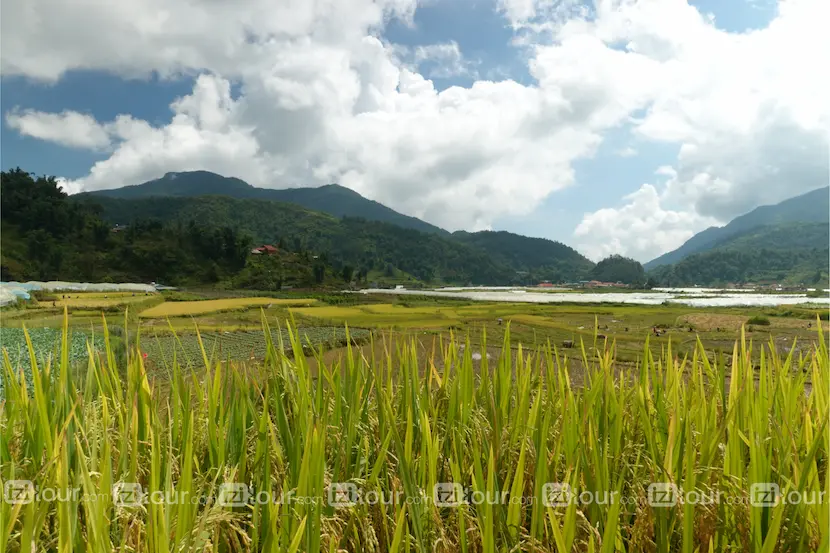
Northern Vietnam's highlands - One harvest per year
In the high mountains of the North, at altitudes often exceeding 1,000 metres, rice cultivation is closely dependent on the cool climate and the natural calendar. Here, farmers, mainly from the Hmong, Dao, and Ha Nhi ethnic groups, only have one harvest per year. This concerns the famous sites of Mu Cang Chai, Sapa, Y Ty, and Hoang Su Phi.
The agricultural cycle follows the natural rhythm below:
- Watering season (May - early June): This is the beginning of the agricultural cycle, when the rice fields are flooded to prepare them for cultivation. The fields then transform into immense natural mirrors, reflecting the sky, clouds, and surrounding mountains. The atmosphere is peaceful, pure, almost spiritual. It is a moment of rare beauty.
- Green season (July - August): The young plants grow rapidly and cover the terraces with a bright and luminous green. This period offers landscapes full of freshness and vitality. Perfect for hiking through the villages, in the heart of a verdant and vibrant nature.
- Golden season (September - October): This is the harvest season, when the rice fields turn an intense golden yellow, spreading like waves of gold on the hills. Under the soft autumn light, the landscape becomes spectacular. This is the favourite time for photographers and nature lovers.
Northern Vietnam's lowland - Two harvests per year
In the lower valleys, benefiting from a more temperate climate and better water resources, farmers can cultivate two rice harvests per year. This concerns the magnificent regions of Bac Son, Mai Chau, Pu Luong, and Tam Coc.
The rice fields in these valleys thus follow three main seasonal stages:
- Green season (February-April and July-August): The fields are adorned with a bright green, a symbol of life and renewal. Whether it's the tender green of spring or the intense green of summer, nature breathes freshness and fertility.
- Spring golden season (late May - early June): As summer approaches, the rice fields ripen and take on a magnificent golden colour, offering luminous and vibrant landscapes.
- Autumn golden season (September - October): The second harvest once again colours the valleys with a shimmering gold under the soft autumn light, a true enchantment for the eyes.
Hoi An - Two harvests per year
In central Vietnam, the rice field landscapes are not as vast as in the north or south, but they offer an intimate and peaceful beauty, especially around the historic city of Hoi An. Thanks to a temperate tropical climate, farmers can achieve two rice harvests per year, transforming the surroundings of Hoi An into a living tableau of nature and rural traditions.
The agricultural landscapes of the centre unfold in three main seasons:
- Green season (February-April and July-August): The rice fields light up with a tender green in spring and then an intense green in summer, creating a soothing contrast with the blue sky and distant mountains.
- Spring golden season (late May - early June): During the first harvest, the golden rice fields of Cam Thanh and Tra Que offer a magnificent rural scene for bicycle rides.
- Autumn golden season (September - October): During the second harvest, the fields around Hoi An once again shine under the golden light, in a serene and authentic atmosphere.
Mekong Delta - Three harvests per year
Unlike the mountainous North, the Mekong Delta, located at the extreme south of Vietnam, benefits from a hot and humid tropical climate with a dense river network, allowing farmers to cultivate up to three rice harvests per year. Thanks to this, the rice fields of the delta offer changing landscapes throughout the year, reflecting life at the rhythm of water and seasons.
- Winter - spring harvest (November - April): This is the main harvest of the year, with the best climatic conditions and the highest yields. Sowing begins at the end of the rainy season, and the fields turn bright green before turning a luminous gold in March-April. This is the ideal time to see the delta in all its fertility.
- Summer - autumn harvest (April - August): This harvest coincides with the rainy season. The rice fields are lush, but the rainfall makes working the fields more difficult. The colours are intense, agricultural life is in full swing, and the landscapes are vibrant, even if muddier.
- Autumn - winter harvest (July - December): Also known as the "flood season", it takes place in areas protected by dykes. The fields are often partially flooded, creating natural water mirrors where palm trees are reflected. The harvest scenes on the water, by boat, are unique in the world.

4. Some notes for discovering the rice fields of Vietnam
While the information above provides a good general overview, in practice, the cultivation seasons can vary slightly from year to year depending on the weather, water availability, altitude, or local specificities.
Before booking your trip, take the time to check information with locals, consult a local agency, or ask your questions in online traveller groups. These sources will offer concrete and up-to-date advice to avoid any unpleasant surprises and fully enjoy your experience. For example, some regions like Sapa only have one harvest per year. If you go too early or too late, you risk seeing only empty, dry, or ploughed fields... far from the spectacular landscapes expected.
If you dream of admiring the golden rice fields of Northern Vietnam, September and early October are generally considered the safest and most spectacular periods to organise your stay.
And above all, don't forget to bring a good pair of walking shoes. The most beautiful rice fields, especially in the North, are often located on mountainsides, several hundred metres above sea level. To access these exceptional viewpoints, those found in the most beautiful photos, you need to walk long distances on steep and muddy paths, especially after rain.
The rice fields of Vietnam, whether terraced in the North or in the fertile plains of the South, are an essential element of the country's identity. Whether you explore the rice terraces of North Vietnam, such as in Sapa or Hoang Su Phi, or the vast fields of the Mekong Delta in the South, each region offers a unique experience. To live this adventure in the heart of the Vietnamese rice fields, it is essential to choose the right time and the right region. The cultivation seasons vary and profoundly influence the landscape of the rice fields, making each trip different depending on when you go.
IZITOUR offers tailor-made tours to discover the rice fields of Vietnam in the best conditions, with practical advice and personalised itineraries. Contact us by email [email protected] to book your experience.
See more:
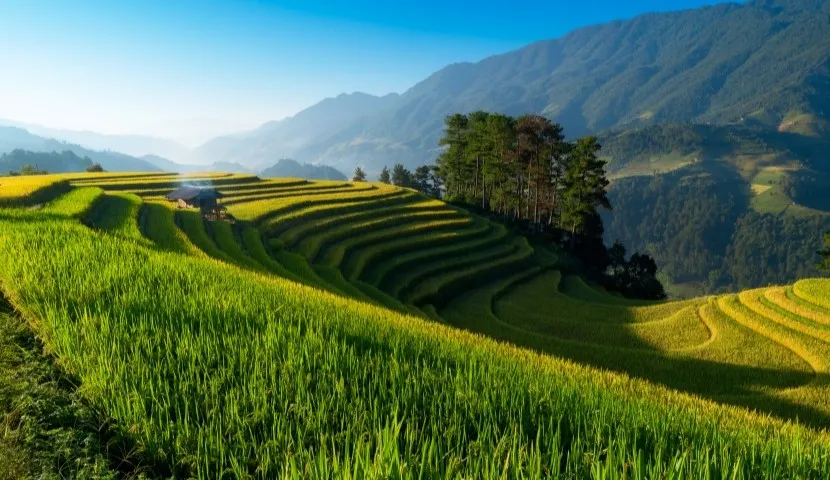







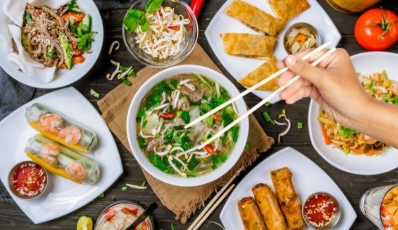
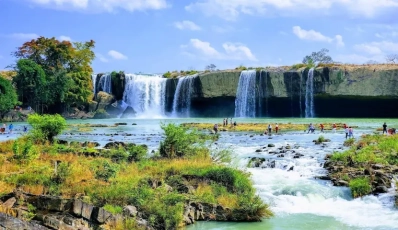
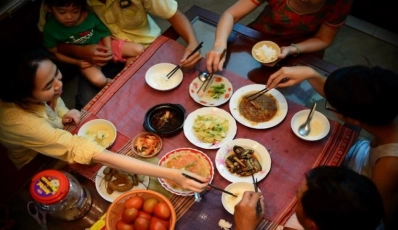
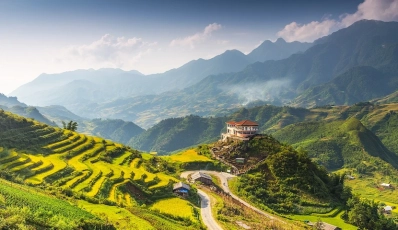
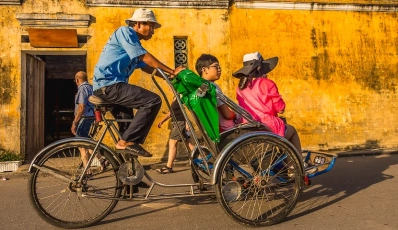

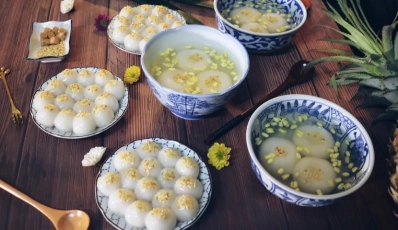

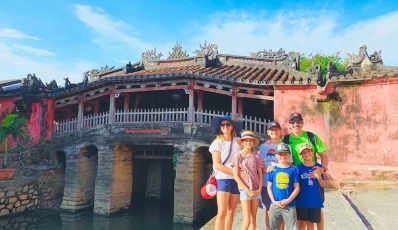
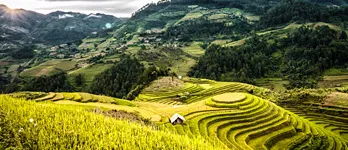
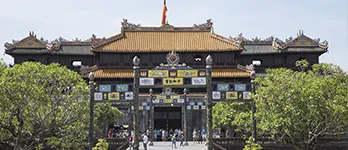
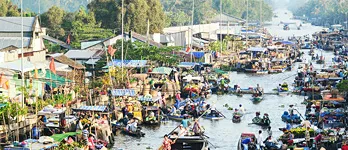

 TRAVELERS' CHOICE 2025
TRAVELERS' CHOICE 2025 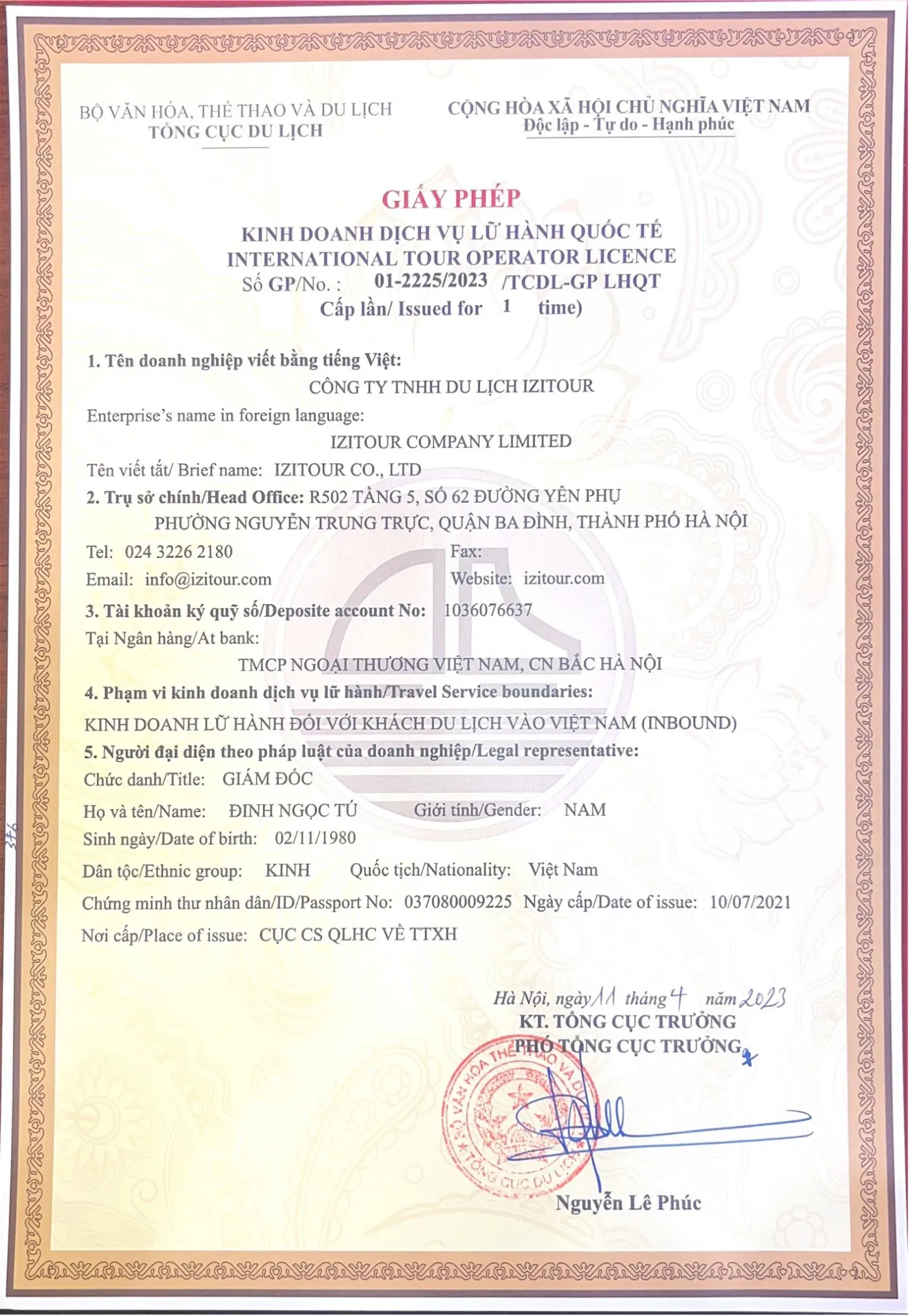



02 Comments
United States
Vietnam
Write Reply